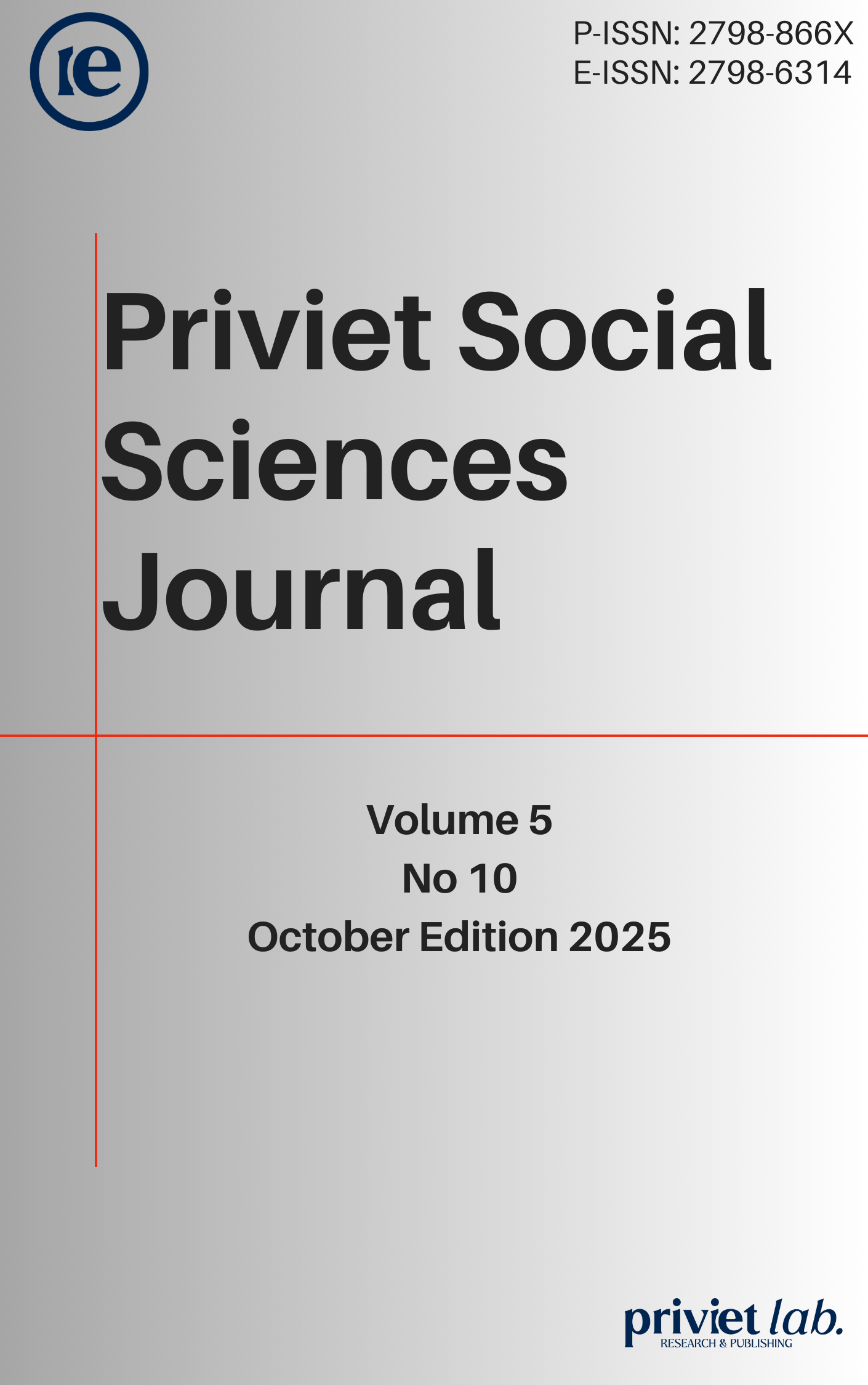The use of gen alpha slang as a persuasive language in Instagram reels marketing
DOI:
https://doi.org/10.55942/pssj.v5i10.543Keywords:
generation alpha slang, persuasive language, Instagram Reels, social media marketing, audience engagement, content analysis, storytelling techniquesAbstract
Social media marketing has been increasingly used to advertise products and services, especially through Instagram Reels. This study investigates how Generation Alpha slang functions as persuasive language in marketing on Instagram Reels. Using a qualitative case study design, 15 influencer Reels were examined through thematic analysis of comments and engagement metrics, including likes, shares, saves and views. The results indicate that reels incorporating Gen Alpha slang and non-fiction storytelling achieved higher engagement rates than those using formal English or rhetorical questions. These findings are interpreted through the Elaboration Likelihood Model, Uses and Gratifications Theory, and Persuasion Theory, which collectively explain how slang operates as a peripheral cue, fulfills social identity needs, and enhances persuasion through increased liking and social proof. While the results provide insight into emerging generational language trends in digital marketing, the study’s scope is limited by its small sample size, convenience sampling, and the absence of intercoder reliability testing. Future research should adopt larger, systematically coded datasets to validate and expand on these findings.
References
Ahn, R. J., Feijoo, B., Sádaba, C., & Fernández-Gómez, E. (2025). Generation alpha’s attitudes toward mobile advertising. Young Consumers, 26(4), 645–664. https://doi.org/10.1108/YC-09-2024-2256
Braun, V., & Clarke, V. (2006). Using thematic analysis in psychology. Qualitative Research in Psychology, 3(2), 77–101. https://doi.org/10.1191/1478088706qp063oa
Cialdini, R. B. (2009). Influence: Science and Practice. Pearson Education. https://books.google.co.id/books?id=d91vPwAACAAJ
Doloi, G. (2024). The Influence of Instagram Reels on Content Consumption Trends among Gen Z. Journal of Social Responsibility,Tourism and Hospitality, 46, 21–31. https://doi.org/10.55529/jsrth.46.21.31
Dong, X., Liu, H., Xi, N., Liao, J., & Yang, Z. (2023). Short video marketing: what, when and how short-branded videos facilitate consumer engagement. Internet Research. https://doi.org/10.1108/INTR-02-2022-0121
Hidarto, A. (2021). The persuasive language of online advertisements featuring social media influencers on Instagram: A multimodal analysis. Indonesian JELT: Indonesian Journal of English Language Teaching, 16, 15–36. https://doi.org/10.25170/ijelt.v16i1.2550
Jha, A. (2020). Understanding Generation Alpha. https://doi.org/10.31219/osf.io/d2e8g
KATZ, E., BLUMLER, J. A. Y. G., & GUREVITCH, M. (1973). USES AND GRATIFICATIONS RESEARCH. Public Opinion Quarterly, 37(4), 509–523. https://doi.org/10.1086/268109
Liang, S., & Wolfe, J. (2022). Getting a Feel of Instagram Reels: The Effects of Posting Format on Online Engagement. Journal of Student Research, 11. https://doi.org/10.47611/jsrhs.v11i4.3600
Menon, D. (2022). Factors influencing Instagram Reels usage behaviours: An examination of motives, contextual age and narcissism. Telematics and Informatics Reports, 5, 100007. https://doi.org/10.1016/j.teler.2022.100007
Ngo, T. T. A., Tran, T. T., An, G. K., & Nguyen, P. T. (2025). Investigating the influence of augmented reality marketing application on consumer purchase intentions: A study in the E-commerce sector. Computers in Human Behavior Reports, 18, 100648. https://doi.org/10.1016/J.CHBR.2025.100648
Nur Fitria, T. (2021). Persuasive Strategies in Selected Brand Products’ Advertisement on Instagram: Rationalization Aspect. Journal of Pragmatics Research, 3, 108–130. https://doi.org/10.18326/jopr.v3i2.108-130
Pérez, E. G. A. (2023). Generation Alpha interaction with social media for marketing to effectively reach this cohort. University of Applied Sciences Technikum Wien. https://epub.technikum-wien.at/obvftwhsmmig/content/titleinfo/9747708/full.pdf
Petty, R. E., & Cacioppo, J. T. (1986). The elaboration likelihood model of persuasion. Advances in Experimental Social Psychology, 19(C), 123–205. https://doi.org/10.1016/S0065-2601(08)60214-2
Phua, J., Jin, S., & Kim, J. (2017). Uses and Gratifications of Social Networking Sites for Bridging and Bonding Social Capital: A Comparison of Facebook, Twitter, Instagram, and Snapchat. Computers in Human Behavior, 72. https://doi.org/10.1016/j.chb.2017.02.041
Priya, A. (2020). Case Study Methodology of Qualitative Research: Key Attributes and Navigating the Conundrums in Its Application. Sociological Bulletin, 70, 003802292097031. https://doi.org/10.1177/0038022920970318
Socialinsider. (2023). Instagram Content Performance Study. Socialinsider Data — Worldwide. https://www.socialinsider.io/data-geeks/Instagram_content_performance_study_2023.pdf
Teng, S., & Khong, K. W. (2015). Conceptualising cues in social media. International Journal of Internet Marketing and Advertising, 9, 233. https://doi.org/10.1504/IJIMA.2015.071488
Tuten, T. L., & Solomon, M. R. (2018). Social Media Marketing. SAGE Publications. https://books.google.co.id/books?id=euPEtwEACAAJ
Downloads
Published
How to Cite
Issue
Section
License
Copyright (c) 2025 Valencia Chen

This work is licensed under a Creative Commons Attribution 4.0 International License.

















